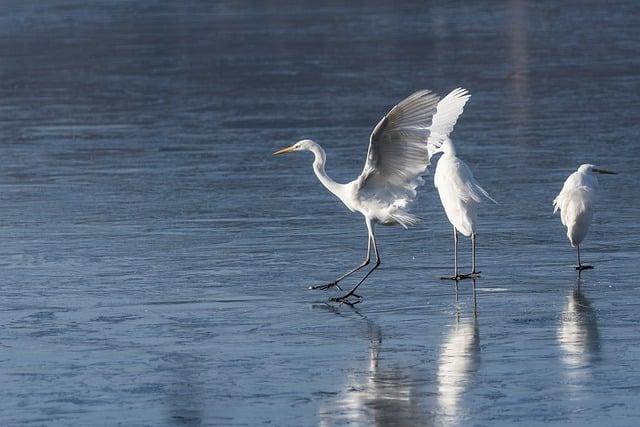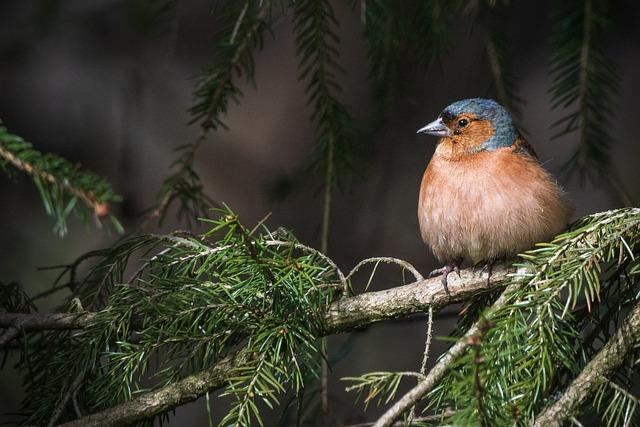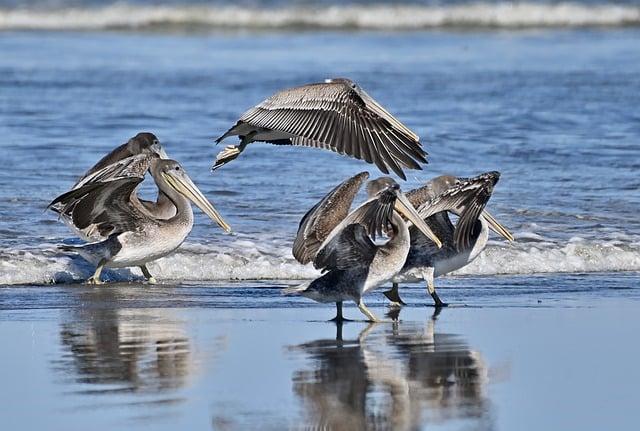- Introduction
- The Importance of Protecting Biodiversity in the Eastern Wildway
- Wildlife Corridors: Connecting Habitats for Species Survival
- Building Partnerships and Collaboration for Conservation Success
- Challenges Facing the Eastern Wildway Initiative
- Conclusion
- FAQs
- References
Introduction
The Wildlands Network's Eastern Wildway is an ambitious conservation project aimed at preserving, restoring, and connecting critical wildlife habitats across eastern North America. This initiative plays a crucial role in halting biodiversity loss by re-establishing natural corridors that allow species to migrate, breed, and survive as climate change and human development increasingly fragment their environments.
In this article, we'll explore the importance of conserving biodiversity in the Eastern Wildway, how wildlife corridors contribute to the survival of species, and the collaborative efforts required to make this conservation movement successful. Additionally, we'll delve into some of the biggest challenges the Eastern Wildway faces as it works toward its goal of protecting these ecologically vital landscapes.
The Importance of Protecting Biodiversity in the Eastern Wildway

(Image: Pixabay/@johnNaturePhotos)
Biodiversity plays an essential role in maintaining the balance and health of ecosystems. The Eastern Wildway covers a broad range of different ecosystems, from dense forests and sprawling wetlands to mountain ranges and coastal regions. Protecting this biodiversity helps ensure resilience in the face of possible future environmental disturbances such as climate change, extreme weather events, invasive species, and disease outbreaks.
One of the central goals of the Eastern Wildway initiative is the preservation of native species, some of which are endangered or near extinction due to habitat destruction and fragmentation. By establishing protected areas and creating new corridors for movement, the initiative helps provide animals such as black bears, wolves, moose, and migratory birds the opportunity to thrive in their natural habitats.
Moreover, protecting the Eastern Wildway isn't just about species survival; it's also about ensuring that ecological processes such as pollination, seed dispersal, and water purification continue unabated. These processes benefit both the environment and human communities that rely on healthy, functioning ecosystems.
In essence, protecting biodiversity means preserving life as we know it. The more species that can coexist in an environment, the better equipped that environment is to adapt to changing conditions and continue providing vital ecosystem services to both humans and wildlife.
Wildlife Corridors: Connecting Habitats for Species Survival

(Image: Pixabay/@sanfengshan)
Wildlife corridors form the backbone of the Eastern Wildway initiative. These corridors act as lifelines for species that require large ranges to survive, such as predators, migratory birds, and herbivores. Wildlife corridors connect fragmented ecosystems, allowing animals to move freely across vast areas without interference from human-made barriers like roads, highways, and urban developments.
For many animals, movement is essential not just for locating food but for breeding and genetic diversity. Fragmented habitats isolate animal populations from one another, reducing their genetic health and making them more vulnerable to diseases, environmental stress, and inbreeding-related issues. With sufficient connectivity through wildlife corridors, populations from different regions can come into contact, mate, and share genetic materials, which builds population resilience and increases species' chances of long-term survival.
In terms of the Eastern Wildway, these corridors are critical for species recovery and habitat restoration. Efforts are focused on creating a network of protected passages that allow species to migrate between national parks, public lands, and private reserves, ensuring survival routes remain available as species contend with climate change and habitat disruptions.
Some notable species benefiting from these corridors include the eastern cougar, which has been listed as extinct in many regions, and the endangered red wolf. By providing space for species to move and mutualize genetic diversity, the Eastern Wildway hopes to bring such species back from the brink of extinction.
Building Partnerships and Collaboration for Conservation Success

(Image: Pixabay/@Mohamed_hassan)
Protecting a landscape as vast and diverse as the Eastern Wildway requires tremendous coordination and collaboration among a wide range of stakeholders, including government agencies, private landowners, non-profit organizations, Native American tribes, and local communities. Each group plays a pivotal role in keeping the Wildway vision alive.
A key feature of the Eastern Wildway’s strategy involves building coalitions and partnerships across political, economic, and social sectors. For example, public-private partnerships often allow the acquisition of critical habitats that may be under threat from commercial development, agricultural expansion, or other damaging land use practices. By merging public funding and private expertise, designated wildlife preserves and corridors become legally enforced sanctuaries for wildlife.
Additionally, collaboration with local governments helps facilitate the protection of habitats in city planning and zoning regulations. For instance, municipal integrations can ensure road design minimizes habitat fragmentation or provides wildlife crossings that safeguard species' migration routes.
Equally important is the involvement of Indigenous or Native American groups whose knowledge of these ecosystems predates modern conservation efforts. Many tribes have historical ties to these environments and play an indispensable role in managing forests, wetlands, and grasslands sustainably. Creating conservation plans that incorporate traditional Indigenous ecological knowledge ensures that the practices used to protect the land honor its cultural heritage while fostering biodiversity and sustainability.
Challenges Facing the Eastern Wildway Initiative

(Image: Pixabay/@Michael_Fotofreund)
Despite the laudable goals of the Eastern Wildway initiative, several significant challenges stand in the way of progress. One of the greatest obstacles is land acquisition. Much of the Eastern Wildway runs through privately owned land, making it difficult to create contiguous corridors, especially when competing commercial interests vie for the same areas for activities such as logging, infrastructure development, or resource extraction.
Another challenge lies in mitigating the effects of climate change, which worsens the viability of certain habitats over time, whether due to rising temperatures, shifting rainfall patterns, or intensifying storms. Climate shifts are likely to cause species distributions to change rapidly, meaning conservationists need to adjust their wildlife corridor strategies in real-time, often without sufficient predictive data models to inform action.
Additionally, the sheer scale of the Eastern Wildway presents logistical difficulties. The Eastern Wildway spans from Florida all the way up into Canada along the Appalachian Mountain Range. Land within this regional scope crosses multiple state jurisdictions, each with its own unique legal frameworks related to land use and conservation policies. The red tape associated with navigating such a patchwork of legal directives significantly delays affirmative action for wildlife conservation.
There is also the human factor—balancing the needs of growing populations and economic demands with the need to protect land for wildlife. Encouraging people and businesses in areas where conservation might limit short-term economic growth requires education campaigns, incentivization programs, and negotiating complex socio-political landscapes.
Conclusion
The Wildlands Network’s Eastern Wildway represents a bold and necessary effort to protect and restore biodiversity across eastern North America. By establishing wildlife corridors that connect fragmented habitats, fostering cross-sectoral partnerships, and addressing ongoing challenges such as land acquisition and climate change, the Eastern Wildway could become a model for large-scale conservation worldwide. Ultimately, succeeding in these efforts means safeguarding not only iconic species, like the black bear and the red wolf, but also ensuring that future generations will inherit a planet rich in ecological abundance and diversity.
FAQs
What species benefit most from the Eastern Wildway?
Several species benefit from the Eastern Wildway, particularly large mammals like black bears, wolves, and cougars that require expansive ranges and migration routes to survive. Endangered species like the red wolf also stand to gain from the establishment of wildlife corridors.
How can private landowners get involved in the Eastern Wildway?
Private landowners can participate by working with conservation organizations to place easements on their property to prevent commercial development, volunteering in stewardship programs, or actively managing their land to support native species and ecosystems.
What regions are encompassed by the Eastern Wildway?
The Eastern Wildway stretches from Florida’s Everglades and stretches northward along the Appalachian Mountains, reaching into Canada. It spans diverse ecosystems such as hardwood forests, wetlands, and alpine habitats.
What is currently being done to address habitat destruction in this region?
Many measures are being implemented to combat habitat destruction, including enforcing public-private land partnerships and working with local governments to implement wildlife corridors and refuges. Public awareness campaigns also aim to mitigate urban encroachment and reduce environmental degradation.

